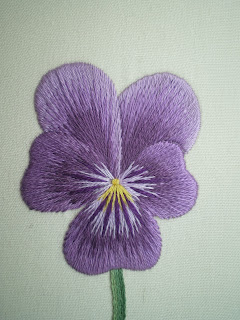I have come to enjoy this annual ritual and was sad to miss it this year. To compensate myself and my needles I enrolled on Susan’s Elliot's Needlebook Ecourse.
© Susan Elliot/Carol-Anne Conway
I might have known that Susan would put the same level of care and energy into her first e-course as she puts into every other venture. The course was presented in a variety of medium, all delivered via a blog set up especially for the course. Even before the course began Susan welcomed use with a post to let us know that our kits had been posted and to give a supply list to those who had opted not to purchase the kit. The supplies in the kit were of the highest quality and arrived beautifully packaged.
© Susan Elliot/Carol-Anne Conway
When Lesson 1 was posted, I had a lovely surprise – videos! I have known Susan for several years now, through her blog and communicating via email but what a treat to see and hear her. I think that the videos where probably my favourite part of the course. It was like having Susan in the room with you. There were video demonstrations of every step and there were also pdf files that gave further information that I found very useful.
As well as the actual lessons, Susan posted extra blogs with related information about Hari-kuyo and needles.
© Susan Elliot/Carol-Anne Conway
The entire course was fun, beautifully presented and best of all, I was able to produce a needle book that I am very pleased with.
Happy Stitching

















